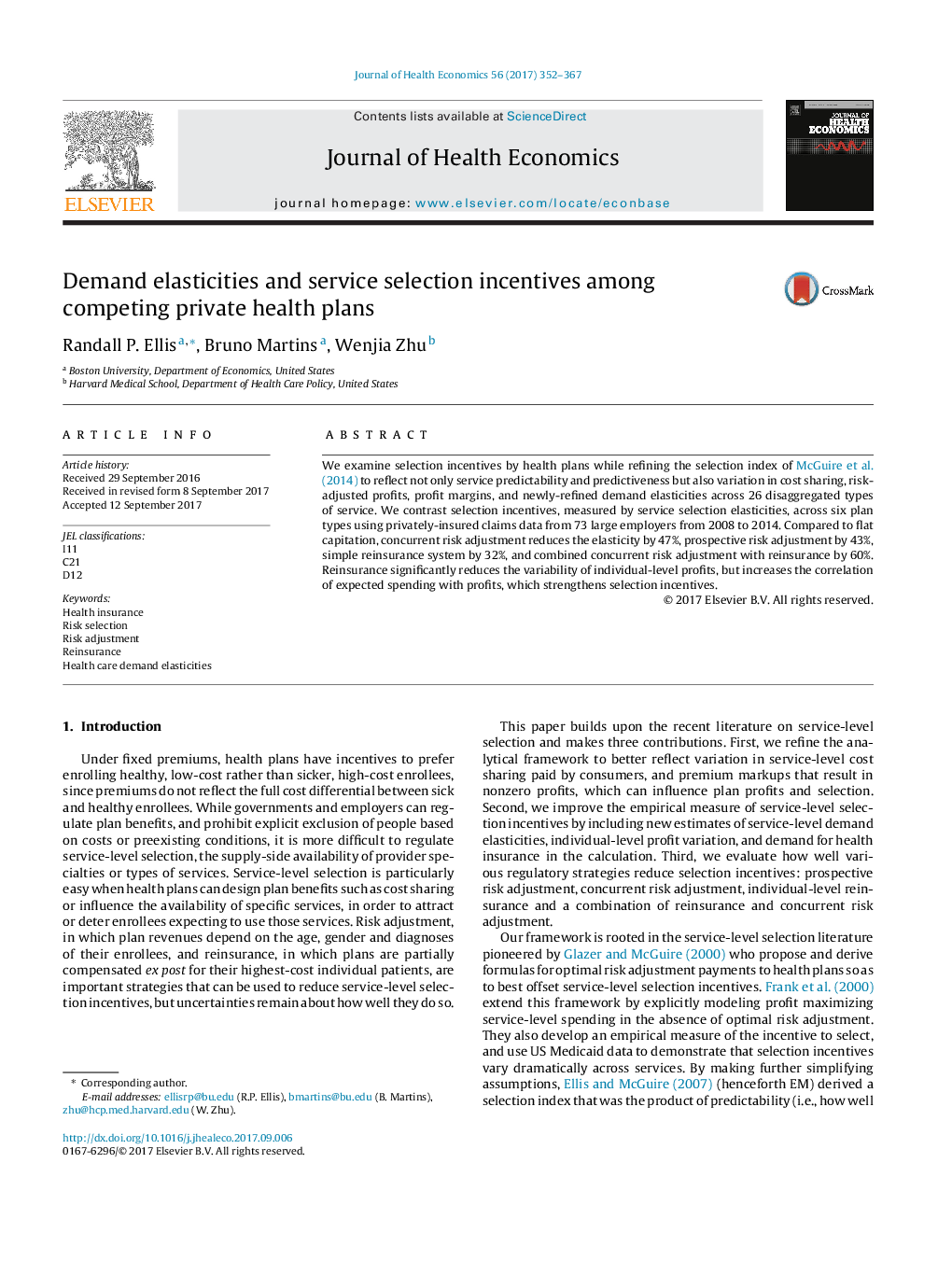| Article ID | Journal | Published Year | Pages | File Type |
|---|---|---|---|---|
| 7363025 | Journal of Health Economics | 2017 | 16 Pages |
Abstract
We examine selection incentives by health plans while refining the selection index of McGuire et al. (2014) to reflect not only service predictability and predictiveness but also variation in cost sharing, risk-adjusted profits, profit margins, and newly-refined demand elasticities across 26 disaggregated types of service. We contrast selection incentives, measured by service selection elasticities, across six plan types using privately-insured claims data from 73 large employers from 2008 to 2014. Compared to flat capitation, concurrent risk adjustment reduces the elasticity by 47%, prospective risk adjustment by 43%, simple reinsurance system by 32%, and combined concurrent risk adjustment with reinsurance by 60%. Reinsurance significantly reduces the variability of individual-level profits, but increases the correlation of expected spending with profits, which strengthens selection incentives.
Related Topics
Health Sciences
Medicine and Dentistry
Public Health and Health Policy
Authors
Randall P. Ellis, Bruno Martins, Wenjia Zhu,
